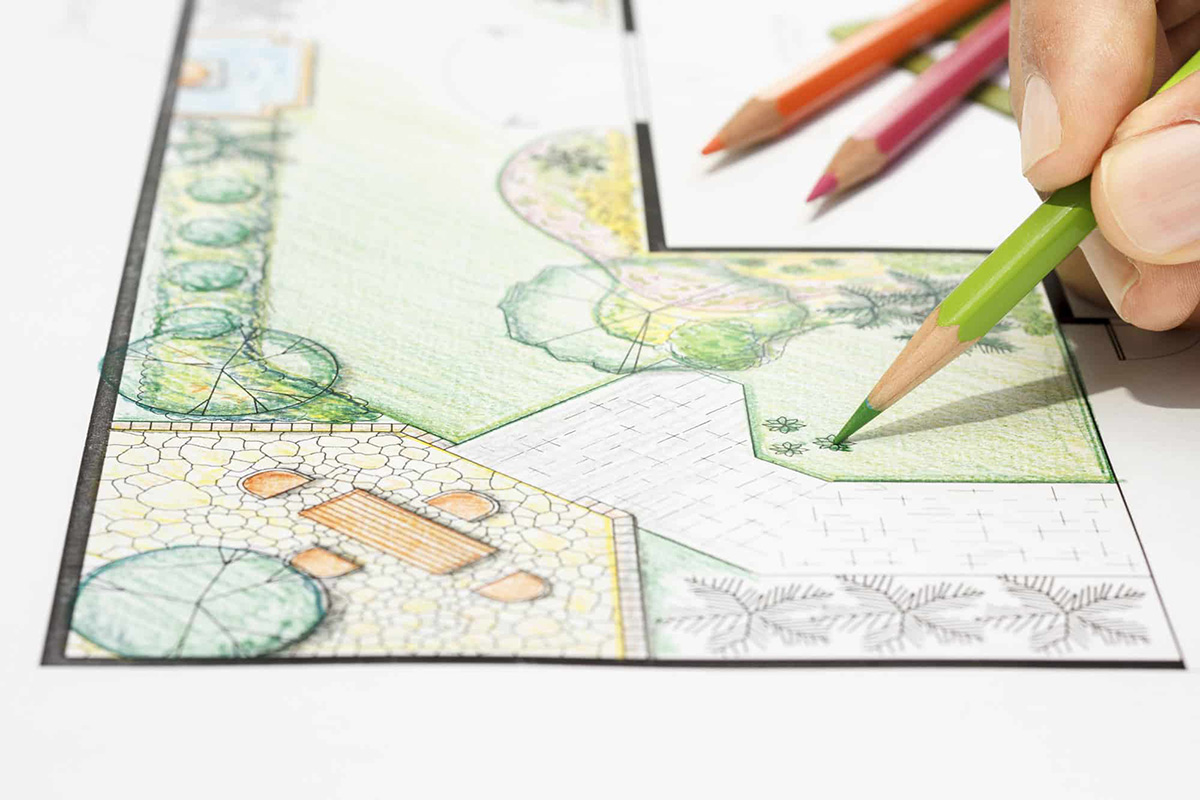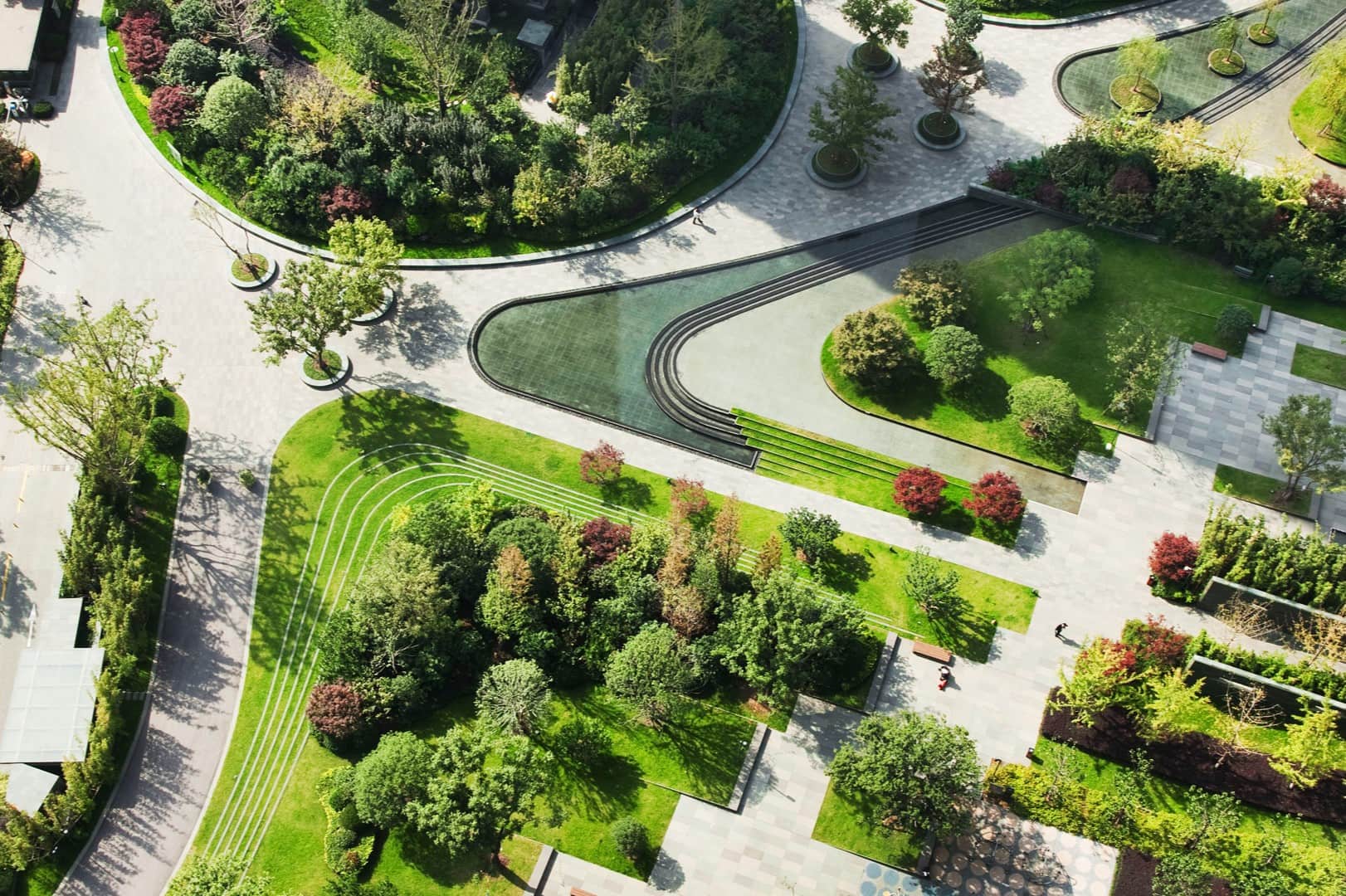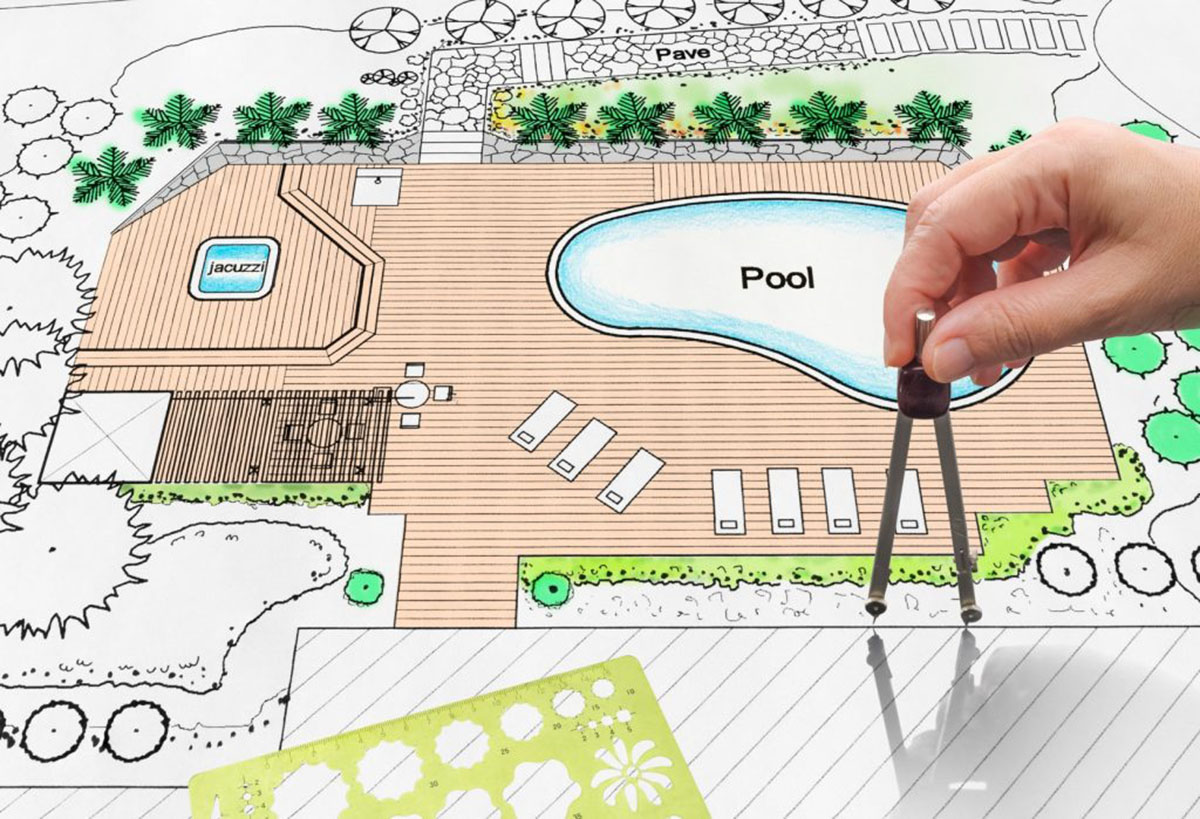Home>Garden Essentials>How Do You Charge For Landscaping


Garden Essentials
How Do You Charge For Landscaping
Modified: March 7, 2024
Looking for landscaping services? Find out how we charge for garden landscaping and get a quote today. Your dream garden is just a call away!
(Many of the links in this article redirect to a specific reviewed product. Your purchase of these products through affiliate links helps to generate commission for Storables.com, at no extra cost. Learn more)
Introduction
Welcome to the world of landscaping, where beauty meets nature. Whether you have a sprawling garden or a small backyard oasis, the art of landscaping can transform your outdoor space into a stunning paradise. But as you embark on your landscaping journey, one question may come to mind: How do you charge for landscaping?
When it comes to pricing your landscaping services, there are several factors to consider. From the type of service you provide to the complexity of the project, understanding these variables will help you determine how to quote your clients accurately. In this article, we will explore the different factors that influence landscaping pricing, the pros and cons of charging an hourly rate versus a project rate, additional costs to consider, pricing adjustments, billing methods, and customer expectations.
Before we dive into the details, it’s important to note that every landscaping project is unique. From simple lawn maintenance to intricate garden designs, the level of expertise and effort required can vary greatly. As a result, pricing will also vary. It’s crucial to assess each project individually and tailor your pricing accordingly.
Now, let’s explore the factors that impact landscaping pricing in more detail.
Key Takeaways:
- Pricing your landscaping services involves considering factors like project scope, labor, materials, and location to determine fair and competitive pricing for your clients.
- Whether charging hourly or by project, clear communication, quality work, and addressing client needs are essential for customer satisfaction and long-term success in the landscaping business.
Read more: How Do You Charge A Ryobi Battery
Factors to Consider
When determining how to charge for landscaping, there are several factors that you should take into account. These factors will help you determine the value of your services and ensure that you are accurately pricing your work. Here are some key considerations:
- Scope of the Project: The size and complexity of the landscaping project will play a significant role in determining the price. A small, straightforward project will typically have a lower price compared to a large-scale garden overhaul.
- Labor and Time: The amount of time and manpower required to complete the project will impact the pricing. More complex projects that require extensive labor may warrant a higher price.
- Materials: The cost of materials, such as plants, flowers, trees, soil, and landscaping tools, should be factored into the pricing. Ensure that you consider the quality and quantity of materials when determining the price.
- Location: The geographic location of the project can influence the pricing. Factors such as local market rates, cost of living, and transportation costs should be taken into account.
- Experience and Expertise: Your level of experience and expertise in landscaping will impact the pricing. Clients may be willing to pay more for services provided by highly skilled professionals with a proven track record of delivering exceptional results.
- Competition: Researching and understanding your competition is vital. Ensure that your prices are competitive within your local market while considering the quality of your work.
By carefully assessing these factors, you can determine a fair and competitive price for your landscaping services. However, it’s important to note that pricing alone should not be the sole factor in determining the value you bring. Your reputation, customer satisfaction, and attention to detail are also essential considerations.
Hourly Rate vs. Project Rate
When it comes to charging for landscaping services, you have the option to set an hourly rate or a project rate. Both approaches have their advantages and considerations, and it’s essential to weigh the pros and cons to determine which pricing method aligns best with your business model.
Hourly Rate:
Charging an hourly rate means that you calculate your fee based on the number of hours worked. This pricing method offers flexibility, particularly for projects that have varying levels of complexity or unforeseen challenges. Some benefits of charging an hourly rate include:
- Flexibility: The hourly rate allows for adjustments if the project takes longer than anticipated or if additional work is requested by the client.
- Transparency: Hourly rates create transparency for clients as they can see exactly how much time is spent on their project and what tasks are being completed.
- Accurate Billing: Charging by the hour ensures that you are compensated for the actual time spent on the project, taking into account any unforeseen circumstances or changes.
However, relying solely on an hourly rate also has its limitations:
- Uncertainty for the Client: Clients may be hesitant to proceed with a project without a fixed cost, as the final price can be uncertain.
- Pressure to Be Efficient: As an hourly-based landscaper, there is a need to showcase efficiency to maintain customer satisfaction and avoid disputes over the time spent on the project.
Project Rate:
With a project rate, you set a fixed price for the entire project, regardless of the number of hours worked. This approach offers predictability and simplicity for both you and your clients. Here are some advantages of using a project rate:
- Predictable Pricing: Clients know the total cost upfront, which can provide them with peace of mind and make it easier for them to budget for the project.
- Efficiency Incentive: Since you are not billing by the hour, you are incentivized to complete the project efficiently, ensuring that you maximize your profitability.
- Reduced Administrative Work: With a project rate, you can streamline your billing process by providing a single invoice for the entire project, eliminating the need to track and bill individual hours.
However, there are a few considerations when using a project rate:
- Risk of Underestimating: It’s essential to accurately assess the scope of the project and the time and resources required to avoid underestimating the work and potentially losing money.
- Changes in Scope: If the client requests additional work or there are unexpected changes to the project, the project rate may need to be adjusted to accommodate these changes.
Ultimately, whether you choose to charge an hourly rate or a project rate will depend on your business model, the nature of the project, and the preferences of your clients. Consider factors such as project complexity, time commitment, and customer expectations when making your decision.
Pricing for Different Landscaping Services
Landscaping encompasses a wide range of services, each with its own considerations when it comes to pricing. Understanding the pricing structure for different types of landscaping services will help you accurately quote your clients and ensure that your pricing aligns with the value you provide. Here are some common landscaping services and factors to consider when determining their pricing:
- Lawn Maintenance: When pricing lawn maintenance services, factors such as the size of the lawn, frequency of visits, and the complexity of the job should be taken into account. Larger lawns or lawns that require additional services, such as edging, trimming, or weed control, may warrant higher pricing.
- Garden Design and Installation: The pricing for garden design and installation services will depend on the scale and complexity of the project, the selection of plants and materials, and the level of customization. Consider factors such as the design consultation, the cost of plants and materials, and the labor required for installation when determining the price.
- Hardscaping: Hardscaping services, which include the installation of features like patios, walkways, and retaining walls, require specialized skills and materials. Pricing for hardscaping should factor in the cost of materials, the complexity of the design, and the time and labor involved in the installation process.
- Irrigation System Installation and Maintenance: Irrigation services involve the installation, repair, and maintenance of irrigation systems. Pricing for these services will depend on factors such as the size of the area to be irrigated, the complexity of the system, and the cost of materials and labor.
- Tree and Shrub Care: Tree and shrub care services include pruning, trimming, and fertilizing. Pricing for these services can depend on factors such as the size and quantity of trees and shrubs, the complexity of the work required, and any additional treatments or services such as pest control.
- Seasonal Clean-up: Seasonal clean-up services involve tasks such as leaf removal, debris clearing, and preparation for winter or spring. Pricing for seasonal clean-up can be influenced by factors such as the size of the property, the extent of the clean-up required, and the time and labor involved.
It’s important to note that these are just a few examples of the many landscaping services that are offered. Each service may have additional factors to consider when determining pricing. To ensure accurate pricing, assess the unique aspects of each job, estimate the time and resources required, and consider the level of expertise and quality of service you provide.
Additional Costs to Consider
When determining the price for landscaping services, it’s important to consider not only the direct costs associated with the specific services but also any additional costs that may arise throughout the project. These additional costs can impact your pricing structure and profitability. Here are some key factors to consider:
- Permits and Licenses: Depending on your location and the scope of the project, there may be costs associated with obtaining permits or licenses to legally carry out certain landscaping tasks. Research the local regulations and factor in any fees when determining your pricing.
- Equipment and Tools: Investing in high-quality equipment and tools is essential for delivering top-notch landscaping services. However, these initial and ongoing costs should be factored into your pricing to ensure that you can cover the expenses and maintain profitability.
- Transportation and Fuel: Consider the costs of transporting equipment, tools, and materials to and from the job site. Fuel costs can also contribute to overall project expenses, particularly for larger jobs that require frequent travel.
- Waste Disposal: Proper waste disposal is crucial during landscaping projects, particularly when it comes to removing debris, soil, or other waste materials. Factor in the costs of waste disposal, whether it be renting a dumpster or hiring a waste removal service.
- Insurance and Liability: Protecting your business with insurance coverage is essential. Insurance costs, including general liability and worker’s compensation, should be factored into your pricing to ensure that you have adequate coverage without compromising profitability.
- Subcontractors and Specialists: For specialized tasks such as electrical work, plumbing, or tree removal, you may need to hire subcontractors or specialists. Consider these costs when calculating your pricing, ensuring that you can cover the expenses while still maintaining a competitive rate.
It’s crucial to carefully evaluate each landscaping project and identify any potential additional costs that may arise. By accounting for these expenses, you can ensure that your pricing structure is comprehensive and that you can provide your clients with an accurate and transparent estimate.
Consider charging for landscaping based on the project size, complexity, and materials needed. You can also factor in your time and labor costs, as well as any additional services like maintenance. It’s important to provide clear and detailed quotes to your clients.
Read more: Landscaping: How Much Do You Make
Pricing Adjustments
In the world of landscaping, pricing adjustments may be necessary to accommodate various factors that can impact the project’s cost. These adjustments allow you to maintain fairness, flexibility, and profitability in your pricing structure. Here are some common scenarios that may require pricing adjustments:
- Unforeseen Changes in Scope: During the course of a landscaping project, there may be unforeseen changes in the scope of work. This could include additional requests from the client or the discovery of unexpected issues that need to be addressed. In such cases, it is essential to communicate with the client and adjust the pricing accordingly to accommodate the changes.
- Material Cost Fluctuations: The cost of landscaping materials, such as plants, soil, and hardscaping materials, can fluctuate based on market conditions and availability. It’s important to monitor these fluctuations and adjust your pricing accordingly to account for any significant changes in material costs.
- Seasonal Pricing: Some landscaping services may be influenced by seasonal factors, such as the demand for certain services during peak seasons versus off-peak seasons. To remain competitive and account for variations in workload, you may consider adjusting your pricing based on seasonal factors.
- Loyalty Discounts or Package Deals: Offering loyalty discounts or package deals to valued clients can be a way to build long-term relationships and encourage repeat business. These special pricing arrangements should be carefully calculated to ensure that they are still profitable for your business while providing incentives to your loyal customers.
- Market Competition: Assessing your competition and the prevailing market rates is essential for remaining competitive in the landscaping industry. Adjusting your pricing to align with or differentiate yourself from competitors can help attract clients while maintaining profitability.
- Project Financing: For larger scale projects, clients may require financing or installment payment options. In such cases, pricing adjustments may be necessary to account for any administrative or financing costs associated with offering these payment options.
By being aware of these potential scenarios and the need for pricing adjustments, you can ensure that your pricing structure remains fair, transparent, and adaptable to meet the changing needs of your clients and the industry.
Billing and Payment Methods
Once you’ve determined the pricing for your landscaping services, it’s important to establish clear and efficient billing and payment methods. Smooth and timely transactions ensure that you receive prompt payment for your hard work. Here are some considerations when it comes to billing and payment:
- Invoicing: Create professional invoices that clearly outline the services provided, the cost, and any additional charges or adjustments. Use professional invoicing software or templates to streamline the invoicing process and provide a clear record of transactions.
- Payment Terms: Establish clear payment terms and communicate them to your clients. Specify the due date for payment, accepted payment methods, and any penalties or late fees for overdue payments. This will help avoid ambiguity and ensure that both parties understand the payment expectations.
- Accepted Payment Methods: Provide multiple payment options to accommodate your clients’ preferences. Cash, checks, credit cards, and online payment platforms are common methods of payment. Consider offering secure online payment options for convenience and faster processing.
- Deposits and Retainers: Depending on the size and nature of the project, you may request a deposit or retainer upfront before starting the work. This helps ensure commitment from the client and provides some financial security for your business.
- Progress Payments: For larger projects or projects that span an extended period, consider implementing progress payments. Break down the project into milestones and request partial payment upon completion of each milestone. This helps maintain consistent cash flow throughout the project.
- Clear Communication: When sending invoices or discussing payment terms, ensure that you communicate clearly and promptly with your clients. Address any questions or concerns they may have about the billing process, and respond promptly to their inquiries.
- Record Keeping: Maintain organized records of all invoices, payments, and financial transactions. This ensures proper accounting and makes it easier to track outstanding payments or resolve any disputes that may arise.
By implementing effective billing and payment methods, you can streamline your financial processes, ensure timely payment, and maintain a positive relationship with your clients.
Customer Expectations and Satisfaction
When providing landscaping services, meeting customer expectations and ensuring their satisfaction should be a top priority. Satisfied customers are more likely to become loyal clients and refer your services to others. Here are some key considerations to keep in mind:
- Clear Communication: From the initial consultation to the completion of the project, maintaining clear and open communication with your clients is essential. Listen to their needs, provide regular updates on the progress, and address any concerns or questions they may have. This helps foster trust and ensures that both parties have clear expectations throughout the project.
- Quality Workmanship: Delivering high-quality workmanship should be your top priority. Pay attention to detail, use quality materials, and employ skilled professionals to ensure that your clients are delighted with the end result. Strive for excellence in every aspect of your work, from design and installation to maintenance and clean-up.
- Timely Completion: Completing projects within the agreed-upon timeframe is crucial to customer satisfaction. Avoid delays, communicate any changes in the schedule promptly, and strive to exceed deadlines whenever possible. Delays can lead to frustration and dissatisfaction, so make it a priority to manage your time effectively.
- Professionalism and Reliability: Maintaining a professional demeanor and demonstrating reliability are key factors in customer satisfaction. Be punctual, be respectful of your clients’ property, and communicate any unforeseen challenges or changes promptly. Your professionalism and reliability will build trust and confidence in your clients.
- Addressing Complaints: No matter how dedicated you are to providing exceptional service, occasional complaints may arise. It’s important to address these complaints promptly and professionally. Listen attentively, offer solutions or alternatives, and strive to rectify any issues to the client’s satisfaction. Handling complaints effectively demonstrates your commitment to customer service and can even turn dissatisfied clients into loyal advocates.
- Follow-up and Maintenance: After completing a landscaping project, follow up with your clients to ensure their continued satisfaction. Offer maintenance services to help them preserve the beauty of their landscape and address any concerns that may arise. Building long-term relationships with your clients contributes to both their satisfaction and the success of your business.
Remember, customer satisfaction goes beyond just the landscaping services provided. It extends to the entire customer experience, from the first interaction to the final result. By prioritizing clear communication, quality workmanship, reliability, and responsive customer service, you can exceed customer expectations and foster long-term relationships based on trust and satisfaction.
Conclusion
Pricing your landscaping services effectively is crucial for the success of your business. By considering the factors that impact pricing, such as the scope of the project, labor and time involved, materials, location, and your experience, you can accurately determine the value of your services. Whether you choose to charge an hourly rate or a project rate, it’s important to weigh the pros and cons and select the pricing method that best suits your business model and client preferences.
When pricing different landscaping services, factor in the specific requirements of each service, such as lawn maintenance, garden design and installation, hardscaping, irrigation system installation and maintenance, tree and shrub care, and seasonal clean-up. Additionally, don’t forget to account for additional costs, such as permits, equipment, transportation, waste disposal, insurance, and subcontractors, which can impact your pricing structure.
Adjustments to pricing may be necessary in certain situations, such as changes in scope, fluctuations in material costs, seasonal variations, loyalty discounts, competition, or project financing. Flexibility in your pricing allows you to meet the needs of both your business and your clients.
Billing and payment methods should be clear and efficient, ensuring that invoices are sent promptly, payment terms are clearly communicated, and multiple payment options are provided. Maintain open communication with your clients, strive for quality workmanship and timeliness, and address any concerns or complaints promptly and professionally, as customer satisfaction is paramount in maintaining long-term relationships and fostering a positive reputation.
In conclusion, pricing your landscaping services involves careful consideration of various factors, understanding client expectations, and providing exceptional service. By finding the right balance between fair pricing and quality work, you can build a successful landscaping business that delivers outstanding results and satisfies your clients for years to come.
Frequently Asked Questions about How Do You Charge For Landscaping
Was this page helpful?
At Storables.com, we guarantee accurate and reliable information. Our content, validated by Expert Board Contributors, is crafted following stringent Editorial Policies. We're committed to providing you with well-researched, expert-backed insights for all your informational needs.















0 thoughts on “How Do You Charge For Landscaping”